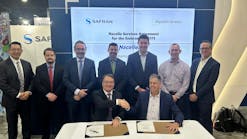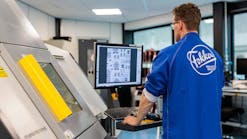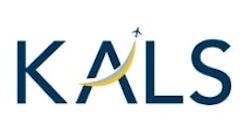Ventura Air Services Commits to Secure Bombardier Learjet 55 STC for SmartSky 4G LTE System Installation and Operation
CHARLOTTE, N.C. – Ventura Air Services has committed to secure a supplemental type certificate (STC) from the Federal Aviation Administration (FAA) for the installation and operation of a SmartSky 4G LTE system on the Bombardier Learjet 55. There are more than 100 Learjet 55s currently in service in the United States. The aircraft holds up to 8 passengers and two crew.
The Learjet 55 is the primary aircraft operated by Ventura Air. This growing New York-based charter management company uses both private jets and helicopters to offer 24/7 first-class transportation solutions. The company dates back to 1955 and enjoys an impeccable safety record.
“As a safety-driven, customer-focused service we’re eager to begin tapping into the benefits of SmartSky 4G LTE, so our role in the STC process is our way of accelerating that goal,” says Ventura Air CEO Nick Tarascio. “SmartSky delivers the high-performance inflight connectivity demanded by both cockpit and cabin. It perfectly aligns with and supports our mission to deliver an industry-leading flight experience.”
The SmartSky 4G LTE system received its first STC in January and parts manufacturer approval (PMA) in March. It expects additional STCs to begin to be available this summer. Network implementation efforts currently underway across the continental United States are continuing to expand. More than 60% of the sites needed to provide U.S. coverage are now in their final stages of deployment.
“We appreciate partners like Ventura Air, who join us in the inflight connectivity revolution,” says Ryan Stone, president, SmartSky Networks. “Full-throttle, unrestricted access to the web while flying means passengers can do it all: stream, chat, text call, videoconference, even game. The benefits to operations are equally compelling: optimized flight paths, fuel savings, engine and airframe monitoring, predictive maintenance and so much more. The future is here.”





